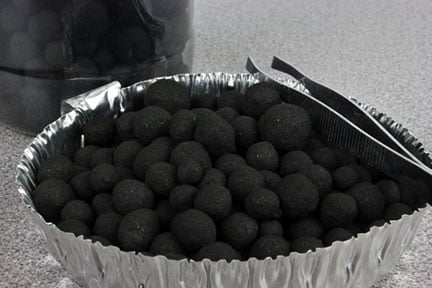Coal, a combustible, sedimentary rock, has been used for centuries as a reliable energy source. Despite growing renewable energy sources, coal is still the backbone of the world’s energy grid, providing the electricity we need to turn on lights, heat our homes, and cook our meals.
The Problem with Coal
While coal provides a dependable, cost-effective energy source, it is not without its problems. Coal dust presents all sorts of problems, not only during processing, but throughout transport as well. In addition to presenting difficult handling issues, coal dust:
-
- Is a health hazard when breathed in
- Is capable of spontaneous combustion, which unfortunately, has seen the result of numerous processing facilities meeting their demise
- Results in significant product loss due to dust being carried away
- Can form problematic build-up in mechanical components
Suppressing Coal Dust
Despite these problems, coal is still a valuable, abundant source of energy, and fortunately, there are many methods for effectively dealing with coal dust in order to alleviate all of the problems listed above.
The most effective way to deal with coal dust is to stop it at the source. Coal dust is generated most during mining and crushing, and if suppressed immediately, there is a minimized need to collect and further process fugitive dust.
There are a variety of spray systems available to suppress dust as it’s made. Since coal is a hydrophobic material, meaning it is not attracted to water, various chemicals are often used to aid in suppression techniques. Coal dust is suppressed as it’s made, and then often again throughout processing, typically at transfer points where dust may again be generated, such as when transferring from one conveyor to another. This is a cost-effective and efficient way to stop coal dust at the source, minimizing the need for further processing techniques.
Using Agglomeration to Eradicate Coal Dust
In situations where large amounts of coal dust are generated, it can be more effective to collect and further treat the dust. This is commonly seen when dealing with low rank coals, which are notoriously dusty. For this reason, the methods listed below are common in places where low-rank coal is frequently processed for use, such as in Australia, Indonesia, and China.
Using a Pin Mixer to De-dust Coal
One of the most common methods of dealing with substantial amounts of coal dust is through the use of a pin mixer. Pin mixers provide a quick and cost-effective solution to coal dust, suppressing dust by mixing it with a binder (or simply just water) at high speeds in order to form small granules in a process commonly referred to as conditioning, or de-dusting coal.
In addition to utilizing a pin mixer to process coal, pelletizing and briquetting are also options. However, while both of these options provide a premium end product, they require extensive processing systems, and are therefore not commonly utilized unless large pellets/briquettes are desired. For this reason, it is more common to use a pin mixer for coal dust suppression.
Pelletizing
Pelletizing creates round coal pellets and is highly effective in mitigating coal dust issues. Here, coal fines are fed into a pin mixer, along with water or a binder, where they are conditioned into granules. Once granule formation has begun, coal granules are fed onto a disc pelletizer, where they are further grown and rounded into more refined coal pellets. From the pelletizer, they are fed to a rotary dryer, where they are dried into a final product. The advantage of a disc pelletizing process is that pellet size and durability is more easily controlled.
Briquetting
Briquetting is perhaps most recognized in the charcoal briquettes we use to heat our grills. Unlike pelletizing, briquetting is a dry process, whereby pressure, instead of a binder, is used to form agglomerates. Here, coal fines are fed between two rolls, where they are put under extreme pressure, which binds coal particles to each other. The fines are pressed into the briquette shape. On occasion, it is desirable to use a binder in order to achieve various product characteristics. It is also worth noting that when a binder is not used, the machine must work harder, therefore reducing its capacity.
Coal is an integral component in providing a growing, global demand for energy. But with coal, comes undesirable dust that must be contained to eliminate safety hazards and prevent product loss. Spray systems provide a valuable opportunity to eliminate dust from the start, while agglomeration methods are the best method for dealing with larger amounts of collected dust, such as during the processing of low rank coals, or also when larger pellets or briquettes are the desired product.
FEECO has been helping companies to deal with their coal dust for decades. From de-dusting coal in a pin mixer, to creating premium pelletized coal products, FEECO has the experience to process coal to your desired specifications. We also offer a unique lab facility, where we can aid in process and product development for coal applications.
For more information on de-dusting coal and coal pelletizing systems, contact us today!


